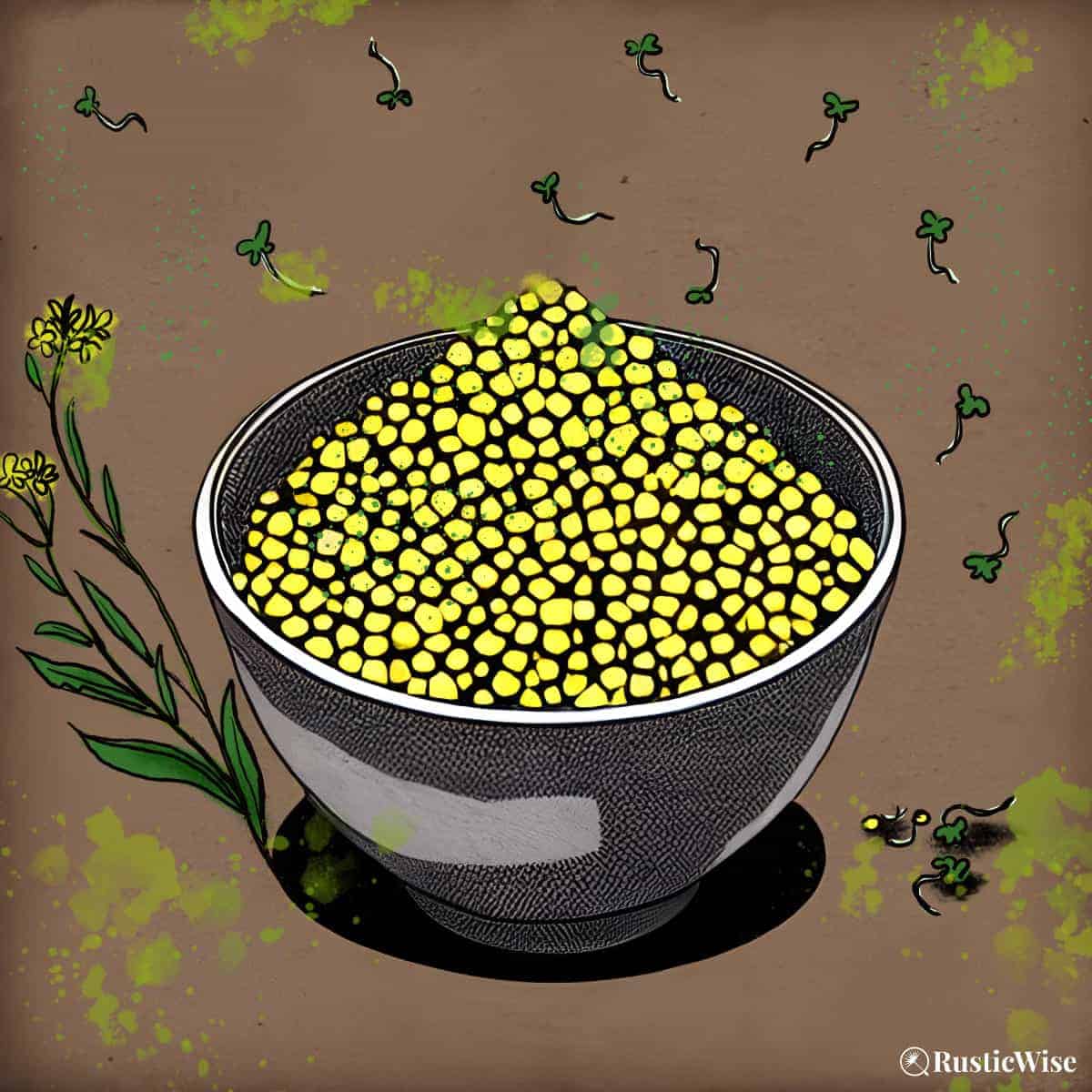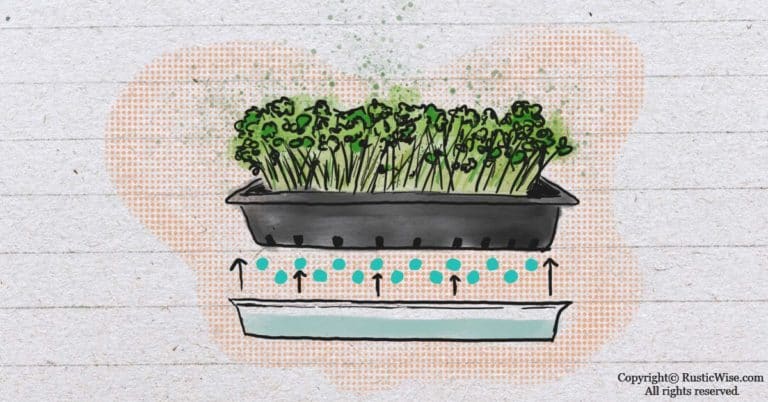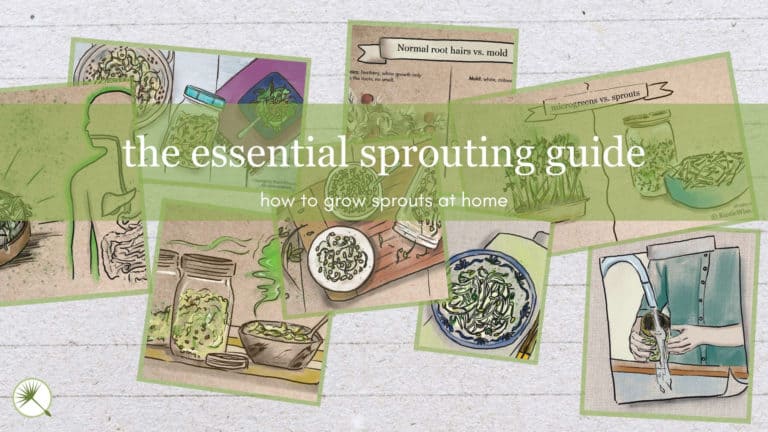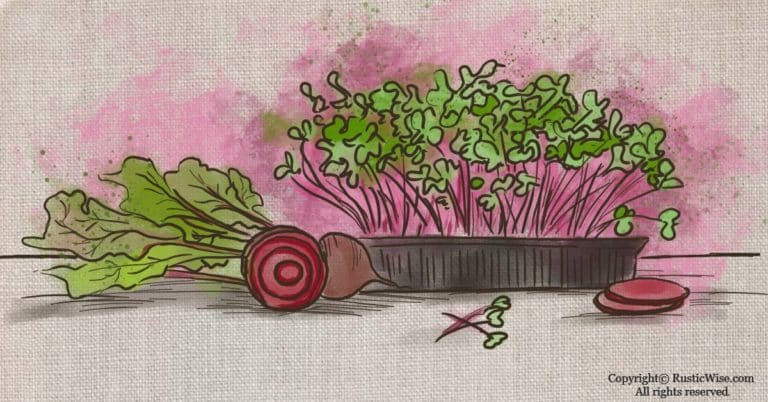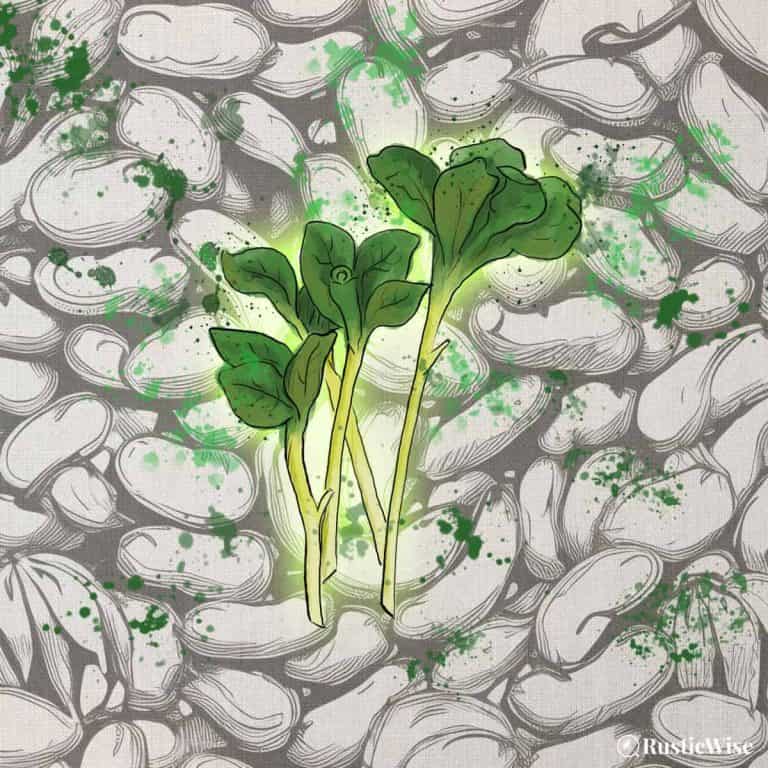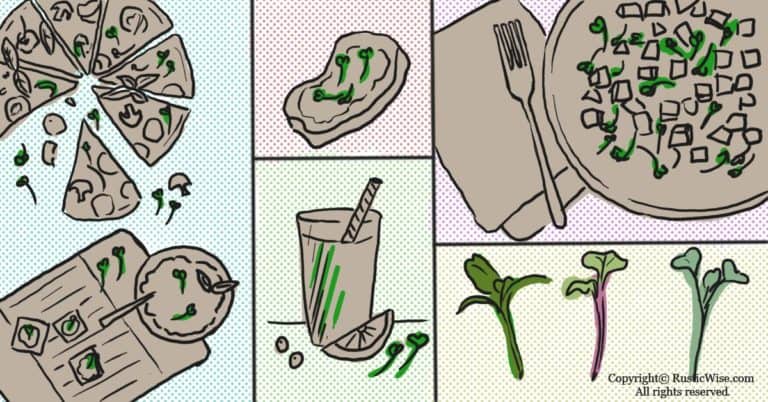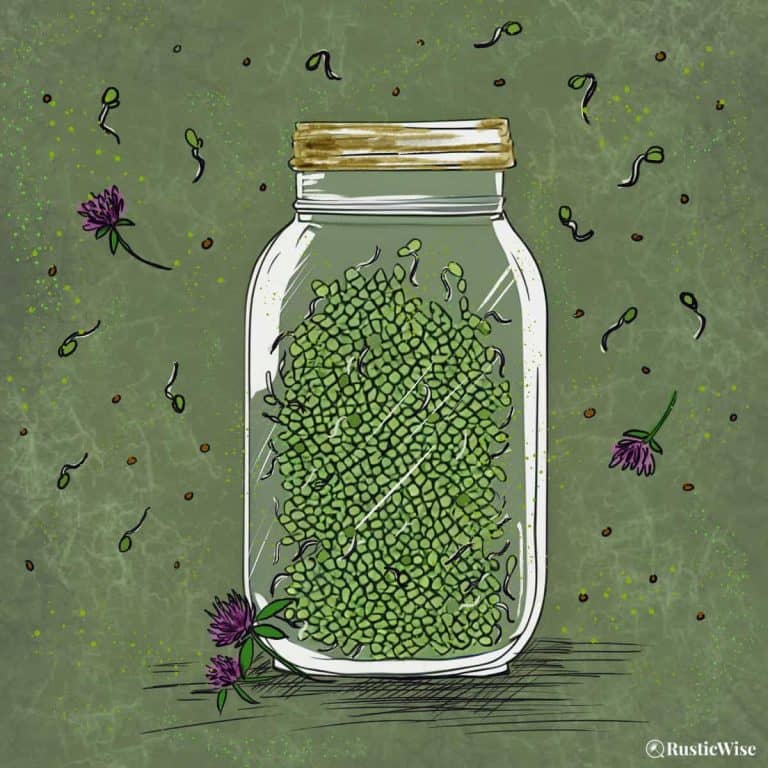How To Grow Mustard Sprouts for a Spicy Kick
Fiery. Piquant. Spicy. However you’d like to describe it, mustard sprouts add some serious kick to liven up a boring salad, or sandwich. While there are many varieties of mustard to grow, the one most commonly used for sprouting in a jar is Oriental mustard.
Oriental mustard seeds are perfect for the impatient gardener. It germinates readily and grows quickly. I’ll show you how to grow mustard sprouts at home using a simple wide mouth mason jar. You’ll have fresh homegrown greens in less than 6 days!
Once you’ve tasted these spicy sprouts, you’ll never have a boring dish again. Let’s look at the different mustard seeds for sprouting (including which ones NOT to grow in a jar). Plus, I’ll guide you how to grow these fiery greens, step by step.
A closer look at the mustard plant
The mustard plant is a herb which belongs to the Brassicaceae family of which broccoli, radish, and kohlrabi also belong. There are ancient records of the seeds being harvested for use as a spice since 3000 BCE.¹
There are many types of mustard seeds with the main ones being:
- Brown and Oriental mustards: Two types belonging to the Brassica juncea species. Both brown and Oriental mustards are spicier than yellow mustard. Aptly named, brown mustard seeds have a reddish-brown coat, while Oriental mustard seed has a golden seed. Brown mustard is used to make Dijon mustard. The Oriental variety is exported to Asia to make various spicy condiments.
- Yellow mustard seed (Sinapis alba): This is the type we use to make condiments in North America, including regular mustard, mayo, and some salad dressings. It has a yellow seed pod.
Did you know that mustard greens come from the same plant that produces mustard seeds? These healthy greens are packed with protein, dietary fiber, vitamins A, C, and K.
Sprouted mustard seeds share the same nutritional benefits as the mature plant, but the young sprouts or microgreens contain higher levels of nutrients.
What exactly are mustard sprouts?
Mustard sprouts are simply sprouted mustard seeds that have germinated and produced a short root or shoot. These sprouted seeds are harvested when still young and contain peak levels of nutrients.
Mustard is a brassica with small sprouts reminiscent of alfalfa, but with much more heat!
Sprouts are grown without soil, often in a jar or sprouter. The entire plant is eaten—seed, root, and shoot.
Chances are, you’ve had alfalfa sprouts before, one of the most common kind of sprout. But many other vegetables, legumes, grains, and nut seeds can also be grown as sprouts such as chickpea (garbanzo), farro, flax seed, fenugreek, lentil, mung bean, and moth bean to name a few.
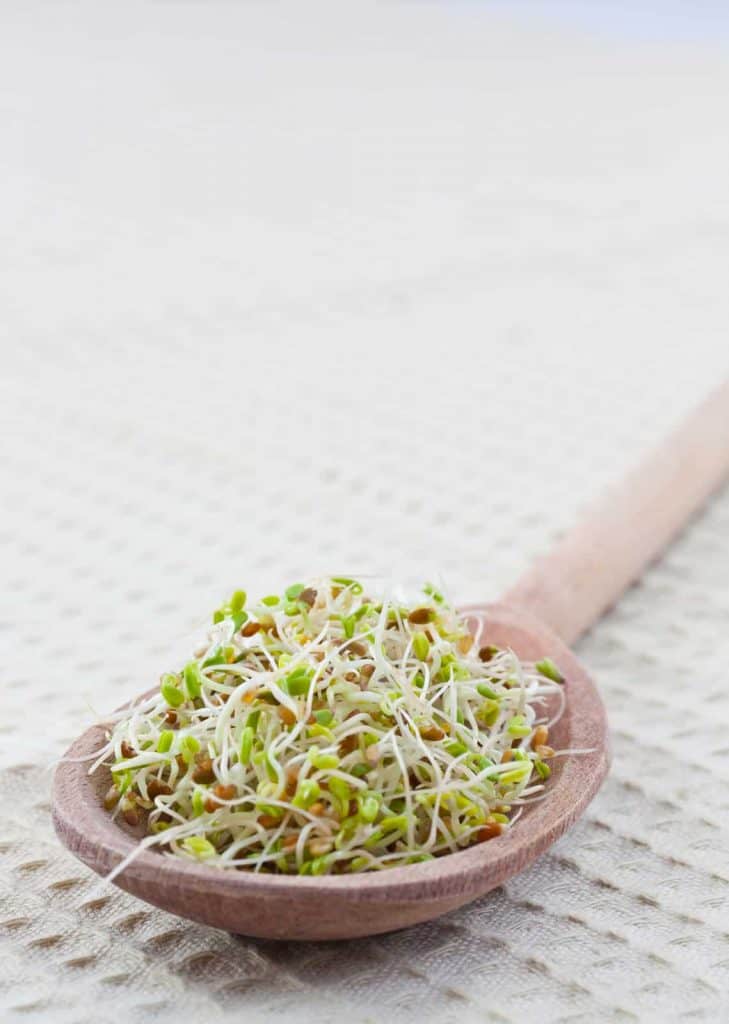
Credit: Yay Images
Are sprouts the same as microgreens?
No, while these two types of greens are both immature versions of plants that are harvested before they’re fully grown, there are key differences between sprouts and micros.
Unlike sprouts which grow in low-light conditions, micros love basking in the sun. Microgreens are grown in shallow trays with soil (or a soilless medium). Microgreens are harvested just above the soil line—this includes the seed leaves (cotyledons), and sometimes the first true leaves, and stems.
What type of seeds are best for sprouting in a jar?
While there are many varieties of mustard seed to choose from, the one that’s best for sprouting in a jar is Oriental mustard seed. This is because it’s one of the few non-gelatinous (or non-mucilaginous) types of mustard seed.
Look for seeds that are organic and labelled “high-germination.” I strongly recommend buying seeds from reputable seed suppliers for best results. Quality sprouting seeds will provide higher germination rates, and are tested to be free of harmful pathogens such as E. coli, Salmonella, or Listeria.
If you’ve ever made chia seed pudding, you know how the seeds turn gel-like upon contact with water. Like chia and flax seed, many mustard seeds are mucilaginous, which means they form a gel layer around each seed and get plump with moisture.
While this isn’t a bad thing, it doesn’t make it ideal for growing in a mason sprouting jar. You’ll end up with a big gooey mess!
This is why we’ll be sticking with Oriental mustards for jar sprouting.
If you want to try your hand at growing mustard microgreens, you have many choices to choose from, including Tat Soi, Tokyo Bekana, Mizuna, Red or Ruby mustard. These types of seeds are all better suited for growing micros in a tray.
Tip: If you want to try sprouting other varieties of mustard in a jar, I would suggest you only sprinkle a few seeds into the mix and sprout with other non-mucilaginous sprouting seeds to minimize the stickiness.
What do mustard sprouts taste like?
Like a cross between horseradish and wasabi, these tiny sprouts bring the crunch and the heat. Many people prefer to use these greens sparingly or mixed with milder varieties of greens such as clover or alfalfa.
Who said greens were boring?
How to grow mustard sprouts in a jar
It’s time to learn how to grow mustard sprouts! Check out this step-by-step guide to growing your own mustard sprouts at home without a fuss.
New to sprouting? Our essential guide to sprouting has everything you need to know to get started growing fresh greens at home.
Remember to use clean growing equipment, and clean water for rinsing and draining sprouts. Keep your jar at room temperature out of direct sunlight.
Growing notes: This is a fairly high yield sprouting seed. Just 1 tablespoon of dry seed yields roughly 1 to 2 cups of sprouts. Sprouts are ready to harvest in 3 to 6 days! Some types of Brassica show root hairs which can look like mold. Learn to tell the difference between real mold vs. normal root hairs.
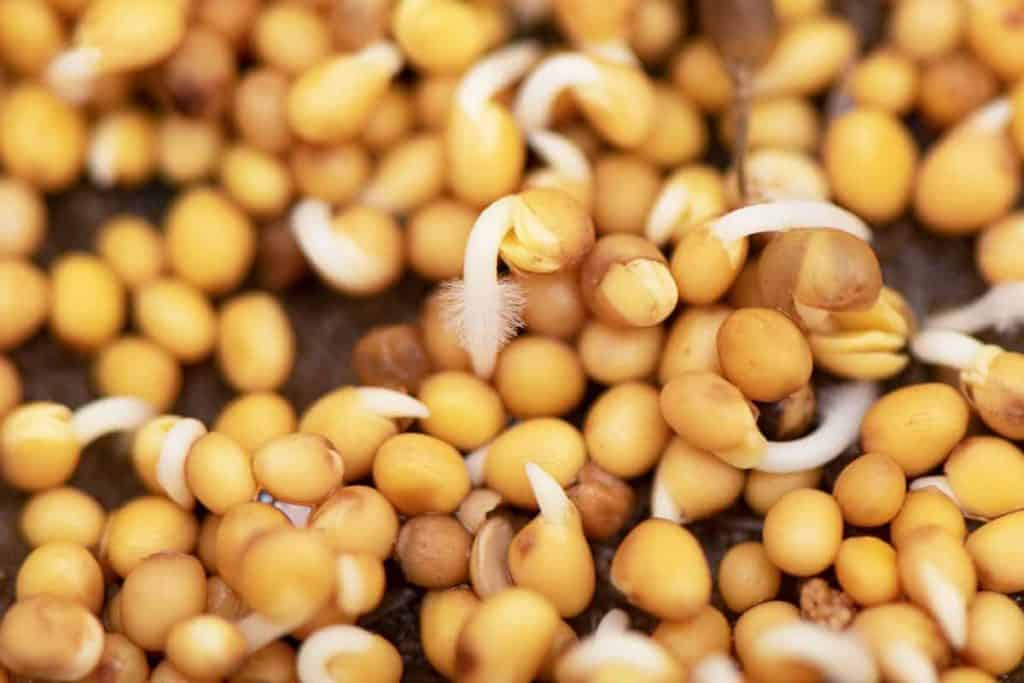
Credit: Deposit Photos
Supplies
All you need to get started are some quality seeds, a bit of patience, and some basic supplies.
- 1-quart glass mason jar (a wide mouth works best)
- Sprouting lid or piece of cheesecloth/muslin and rubber band
- 1 to 2 tablespoons of quality organic Oriental mustard seeds
- Clean water (filtered)
- Colander
Grow mustard sprouts step by step
Follow these simple steps and your sprouts will be ready to harvest in 3–6 days!
- Measure seeds: Portion out roughly 1 to 2 tablespoons of seeds per quart jar.
- Inspect and wash seeds: Do a quick look-over and remove any damaged seeds or other debris. Place the seeds in the jar, swirl, and rinse with clean cool water. Drain.
- Soak: Fill the jar with clean water again and ensure the seeds are fully submerged under water. You may need to swirl them and push them underneath the waterline. Let them soak overnight, or for 4 to 12 hours. This soaking period helps to activate the seeds. Place a sprouting lid or fasten a piece of cheesecloth onto the jar with an elastic band.
- Drain: After the seeds have soaked, drain the excess water by tipping the jar upside down. You could also rest it at an angle inside a bowl for more thorough draining.
- Rinse and drain the seeds: After the initial soak, there’s no need to soak again. Continue to rinse with cool water at least twice a day, or every 8–12 hours. When rinsing, ensure all sprouts get hit with fresh water. Make sure you allow the jar to fully drain or you’ll end up with moldy sprouts. Keep the jar out of direct sunlight at room temperature. It does not need to be in a completely dark location—a shady corner of the kitchen works fine.
- Harvest time: It’s best to harvest to taste, so try tasting a few sprouts each rinse/drain cycle. Most mustard sprouts are ready to harvest between Days 3–6. When harvesting, give your sprouts one last rinse under cold water in a colander to remove any seed hulls or other residue. If you find you have a lot of seed hulls remaining, you can place the sprouts in a bowl of cool water. The hulls will float to the surface. Allow to drain fully in a colander for several hours, and pat dry. Keep in the refrigerator.
How long do mustard sprouts last?
Most sprouts are best if eaten within 2–3 days. But with proper storage, you may find sprouts last up to a week. Keep your harvested sprouts in the fridge up to a week in a glass container, plastic bag, or Tupperware.
I like to store my sprouts in a reused yogurt container with a few holes drilled in to give them a bit of air circulation. The key is finding the sweet spot between giving the greens some fresh air, but not so much that they become dry and wilted.
Only store your sprouts in the fridge when they are fully dry. Any moisture left on sprouts causes them to deteriorate quickly. If you can’t wait for them to air-dry in a colander, try using a salad spinner.
Check out our article on tips for keeping bean sprouts fresh for longer.
Nutrition facts of mustard sprouts and greens
Raw seeds contain antinutrients which block the absorption of nutrients by the body. Sprouting seeds helps to decrease antinutrients, such as phytic acid. The sprouting process also makes the seeds more easy to digest by breaking down complex starches and sugars into simpler forms.
Mustard greens are a great source of dietary fiber and plant-based protein. It also contains copper, iron, magnesium, selenium, vitamins A, B6, C, and K.
These healthy greens have glucosinolates and myrosinase—compounds which help phytochemicals prevent the growth of cancer.³
Ways to use mustard sprouts
Add this sprout to your list of flavorful greens. Since these spicy greens are so sharp and peppery, you might want to use them sparingly at first (unless you really like the heat!).
Here are a few ideas on how to use them.
- Enjoy them as a salad green: Mix with other milder sprouts such as alfalfa, clover, or lentil sprouts, for example.
- Make better sandwiches: You can use this green like other leafy vegetables and add to sandwiches and wraps.
- Use as a garnish for savory dishes or appetizers: Grilled scallops, steaks, certain types of fish, omelets, and pizza may benefit from a spicy kick!
- Lightly cook: Add during the last minute or two of cooking to soups and stews for a sharp dimension.
Note: While many people enjoy these sprouts raw, it’s suggested that some people cook them instead. Vulnerable populations, including pregnant women, the very young or elderly, and those with underlying health issues should avoid eating raw sprouts.
👉 If you like this post, see our Essential Sprouting Guide: How To Grow Sprouts at Home. 🌱
Would you like more timeless tips via email?
Fun tips to help you live an independent, self-sustaining lifestyle. Opt-out at any time.


References
- Britannica, mustard (plant, vegetable, and condiment), https://www.britannica.com/plant/mustard. Accessed November 2022.
- Saskatchewan Mustard Development Commission, Types of mustards and their uses, https://saskmustard.com/production-manual/plant-description/types-of-mustards-and-their-uses/index.html. Accessed November 2022.
- Evans, Doug (2020). The Sprout Book: Tap into the Power of the Planet’s Most Nutritious Food. St. Martin’s Publishing Group. ebook.

Author: Josh Tesolin
Josh is co-founder of RusticWise. When he’s not tinkering in the garden, or fixing something around the house, you can find him working on a vast array of random side projects.

